#psittrichas fulgidus
Note
I love your blog! Can I see some Dracula parrots and red-tailed black cockatoos?
Of course! Here you go:
..................................................................................
Dracula Parrot (Pesquet's Parrot):
(Psittrichas fulgidus)



..........................................................
Red-tailed black cockatoo:
(Calyptorhynchus banksii)




..................................................................................
#asks#ask box#red-tailed black cockatoo#dracula parrot#Calyptorhynchus banksii#Psittrichas fulgidus#pesquet's parrot#allblackbirds#birds#black bird#bird#black plumage#black feathers#parrot#cockatoo#ask
875 notes
·
View notes
Photo

Pesquet's Parrot (Psittrichas fulgidus)
© dgward55
180 notes
·
View notes
Photo

A new variant has been added!
Pesquet's Parrot (Psittrichas fulgidus)
© Antisepticc
It hatches from black, bright, broad, brown, distinctive, large, long, nearby, nomadic, pale, pointy, primary, primitive, rasping, raucous, red, similar, and small eggs.
squawkoverflow - the ultimate bird collecting game
🥚 hatch ❤️ collect 🤝 connect
1 note
·
View note
Text


Dracula Parrot aka Pesquet’s Parrot (Psittrichas fulgidus), family Psittaculidae, order Psittaciformes, endemic to New Guinea
photographs by Peter Tan & Greg Hume
2K notes
·
View notes
Text
Ooh, I have the polls feature now!
Hmm...
18 notes
·
View notes
Text

Loro de Drácula: una ave gótica en la Tierra
Es probable que sea el ave más rara y gótica que existe, y es tan acertadamente llamado el loro de Drácula.Formalmente llamado loro de Pesquet o Psittrichas fulgidus, este ave de aspecto siniestro es el único miembro de su género y su género es el único miembro de su subfamilia.También conocido como el loro aguileño o el loro vulturino, se encuentra únicamente dentro de las selvas y montañas más bajas de Nueva Guinea.Vive una vida nómada, alimentándose de una dieta altamente especializada.
Una especie amenazada
Su brillante plumaje escarlata contrasta perfectamente con su pecho, espalda y cola de color gris polvoriento.Estas llamativas plumas lo han convertido en un blanco de los caza furtivos locales, lo que, junto con la creciente pérdida de hábitat, lo han llevado a pertenecer como especie vulnerable en su lista roja de la Unión Internacional para la Conservación de la Naturaleza.
Alimentación especial: Loro de Drácula
Aunque puede que no tenga tanta sed de sangre como su nombre lo indica. Esta ave se mantiene alimentándose casi exclusivamente de higos, lo que los investigadores sospechan es la razón por la cual terminó con su extraña cabeza semi calva.Al igual que los buitres perdieron las plumas en la cabeza como una adaptación para alimentarse de cadáveres, se cree que el loro de Drácula hizo lo mismo en respuesta a su dieta de frutas pegajosas.La falta de plumas alrededor de su pico y ojos significa que es capaz de evitar convertir su cara en un desastre pegajoso.Además, se alimenta de una una especie de higos difíciles de encontrar, cuya rareza pone en peligro su supervivencia. Sin embargo, también se sabe que encuentra alimento en el néctar de ciertas flores.
Características y comportamiento
El loro de Drácula es un ave grande y pesada, que se extiende hasta casi medio metro desde el pico hasta la cola y pesa casi un kilogramo. Hay muy poca diferencia entre los loros Drácula machos y hembras. Una marca reveladora es que la mayoría de los machos tienen una mancha roja en la cabeza detrás de los ojos.
Los loros de Drácula parecen ser algo sociales y generalmente se ven en parejas o, a veces, en grandes grupos de hasta 20.Asimismo, durante el vuelo, alternan entre batir rápidamente sus alas y disfrutar de deslizamientos cortos. aA diferencia de otros loros, estas aves no trepan ramas para moverse en los árboles. En cambio, saltan de rama en rama.
0 notes
Photo

Black and red bird by
302 notes
·
View notes
Photo

Pesquet's parrot (Psittrichas fulgidus) perched on branch. Beauval Zoo Parc, France. Captive.
Photographer: Eric Baccega
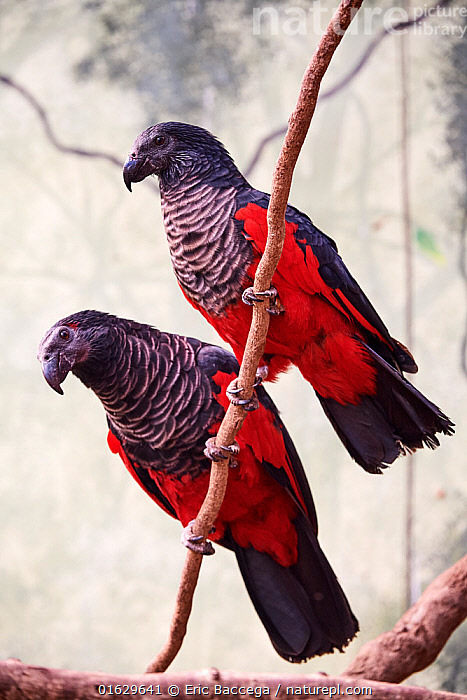
#eric baccega#photographer#pesquets parrot#psittrichas fulgidus#beauval zoo parc#france#nature#bird#new guinea
8 notes
·
View notes
Text
The Dracula Parrot

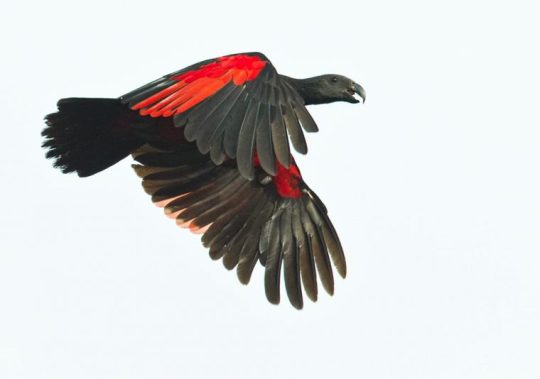

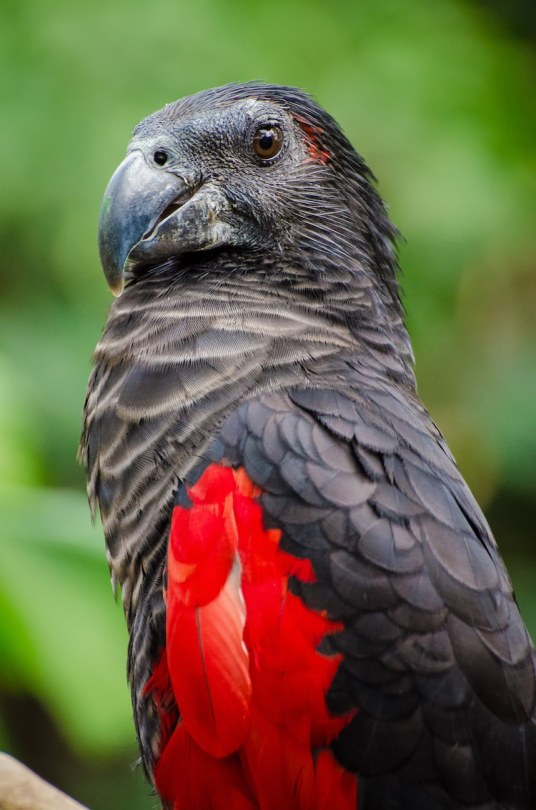
A bird that can grow to 46cm (18 inches or 1.6 feet) and can weigh 1.5-1.8lbs (680-800g or 24-28oz)
They are known for their distinctive pattern of vibrant red. Dracula's exclusively eat a certain type a fig, while some are studied to eat flowers 🌹 and nectar.
Dracula's are seen mostly in pairs, while others fly in groups of up to 20!
They are native to hill and montane forest in New Guinea. ❤️ But they are a VULNERABLE SPECIES. Dracula's are known to lay 2 eggs in hollowed trees.
#Vulnerable Species#Dracula Parrot#New Guinea#Pesquet's Parrot#Psittrichas Fulgidus#Vulturine Parrot#Frugivore#frugivores
4 notes
·
View notes
Photo
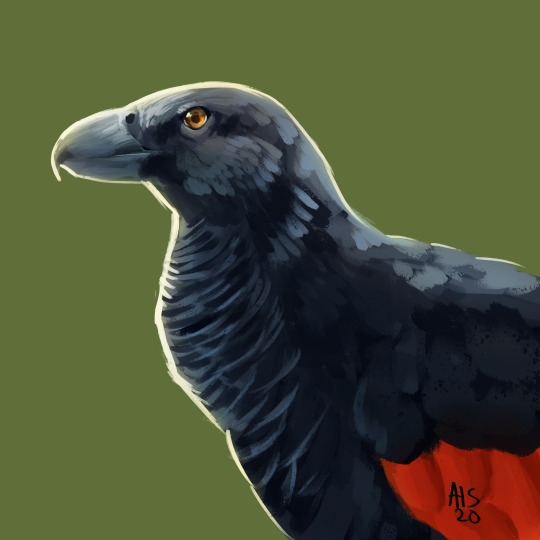
day 377, a pesquet’s parrot for @fatedeniedhope.
Requests for birds are open! Just drop a message with one and I’ll reply when I can. It just takes me a while to get to them these days. I’m aiming for at least once a week, usually Thursdays.
[project tag] | [kofi]
Find me on: [twitter] | [pillowfort]
39 notes
·
View notes
Photo
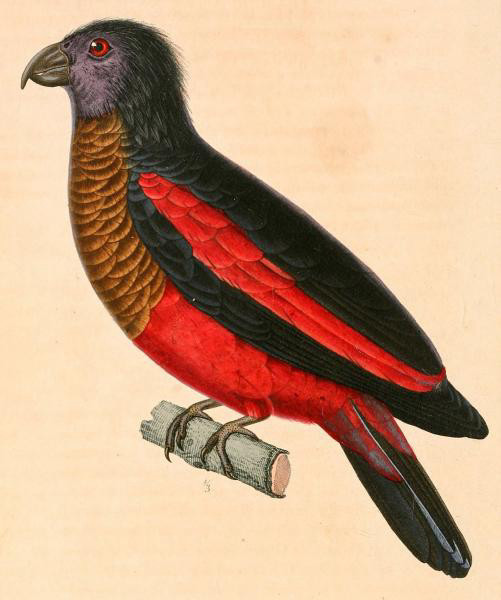
A new variant has been added!
Pesquet's Parrot (Psittrichas fulgidus)
© René-Primevère Lesson
It hatches from black, bright, broad, brown, distinctive, large, long, nearby, nomadic, pale, pointy, primary, primitive, rasping, raucous, red, similar, and small eggs.
squawkoverflow - the ultimate bird collecting game
🥚 hatch ❤️ collect 🤝 connect
1 note
·
View note
Text

Dracula Parrot aka Pesquet's Parrot (Psittrichas fulgidus), family Psittaculidae, order Psittaciformes, endemic to New Guinea
photograph by Mike Peel
670 notes
·
View notes
Photo

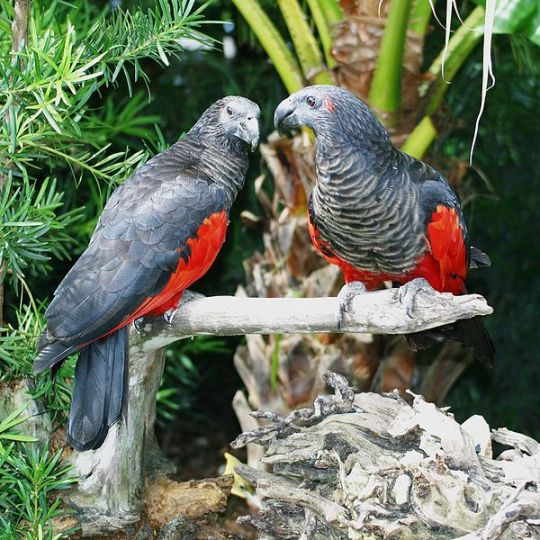

Pesquet´s parrot (Psittrichas fulgidus)
Pesquet's parrot is endemic to hill and montane rainforest in New Guinea. It is a large parrot with a total length of approximately 46 cm. Pesquet's parrot is a highly specialised frugivore, feeding almost exclusively on a few species of figs. Flowers and nectar have also been reported. At least in parts of its range, it is seasonally nomadic in response to the availability of fruits. The bare part of the head is presumably an adaptation to avoid feather-matting from sticky fruits. It is typically seen in pairs or groups up to 20 individuals. It is evaluated as Vulnerable on the IUCN Red List of Threatened Species.
photo credits: Greg Hume, wiki, Peter Tan
#pesquet´s parrot#Psittrichas fulgidus#parrot#zoology#biology#biodiversity#science#wildlife#nature#animals#cool critters
2K notes
·
View notes
Photo

Meet the Vulturine Parrot (Psittrichas fulgidus), or Pesquet’s Parrot! One of its common names is a nod to its featherless face, which is reminiscent of a vulture’s. What’s different, though, is that the parrot mainly eats figs, not carrion. Like in vultures, scientists think its bare face might be an adaptation to prevent bits from sticking to it when diving into a meal. This bird lives in the forests of Papua New Guinea. Photo: Mike Peel, CC-BY-SA-4.0, Wikimedia Commons https://www.instagram.com/p/CQII1m8Am-1/?utm_medium=tumblr
605 notes
·
View notes
Text

Pesquet's Parrot
Psittrichas fulgidus
The Pesquet's Parrot(Dracula Parrot) is one of the three parrots that have fatherless faces, it might have evolved that way based on what it eats
Found in New Guinea
10 notes
·
View notes

